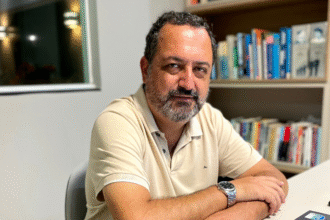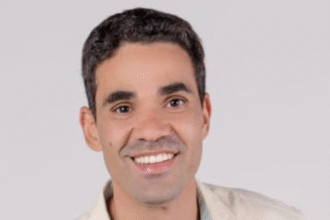With over three decades dedicated to public health, nurse and university professor Roberto Martins de Souza transforms his experience into research in the book “Tuberculosis and its Representations in Society ,” the result of his doctoral thesis at PUC-SP. The work analyzes not only the physical effects of the disease, but also the emotional and social consequences faced by patients—who, even after medical advances, still live with stigma and exclusion.
Based on interviews and extensive bibliographical research, the author reveals how tuberculosis continues to cause isolation and discrimination, especially among people living with HIV. For Souza, the problem goes beyond the medical field: it reflects a care model that still marginalizes patients. “The disease creates a rupture between body and spirit, and this needs to be addressed as part of the treatment,” he points out.
More than an academic study, the book invites reflection on empathy, inclusion, and the humanization of care. Roberto Martins de Souza is a professor at universities in the capital and rural areas of São Paulo and has extensive experience in hospitals and primary care units. Tuberculosis and its Representations in Society marks his debut as an author, combining practical experience and scientific rigor in an essential work for healthcare professionals and all those interested in the relationships between medicine, mind, and society.
Throughout your career as a nurse and professor, what was the most significant moment that awakened in you the need to transform tuberculosis into a research topic and, now, into a book?
What sparked my desire to turn tuberculosis into a research topic, and now into a book, was the realization of the need to develop government campaigns, whether on radio, television, newspapers, or other means of disseminating information about tuberculosis.
The number of tuberculosis cases is increasing every year, both here in Brazil and in other countries. I’ve seen the number of patients I see each week double. Tuberculosis is a disease closely linked to poverty, and we’ve noticed that poverty is also growing worldwide. Writing the book “Tuberculosis and its Representations in Society” is intended to raise public awareness about tuberculosis.
You analyze how tuberculosis affects not only the body, but also the mind and social life of patients. In your opinion, which of these dimensions is most neglected by the healthcare system?
I believe both are neglected by the government. We have numerous health professionals in large urban centers, such as the Southeast, Central-West, and South regions, but very few health professionals in the North and Northeast regions. I believe that if the government invested more resources in these less privileged regions, tuberculosis rates would be at acceptable levels.
Tuberculosis affects the mind and body, precisely due to the impoverishment of the population, specifically here in Brazil, where unemployment has been growing at alarming rates and, as a result, generating poverty.
For an individual with pulmonary tuberculosis, the correct treatment is around six months. This causes the patient to remain socially isolated, for fear of transmitting the disease to others.
Prejudice still accompanies tuberculosis, just as it did in sanatoriums in the past. What surprised you most when hearing patients’ accounts of discrimination today?
Discrimination continues, but to a lesser extent than in the past. Patients with pulmonary or pleural tuberculosis are treated in a UBS (Basic Health Unit) for six months. Because transmission is respiratory, these patients are afraid to speak, cough, and even share personal items such as forks, knives, towels, etc.
After the first fifteen days of treatment, with the use of specific antibiotics, this patient no longer transmits the tuberculosis bacillus. However, some family members and even the workplace of these patients may exclude them from social life. This is unjustified.
How do you view the relationship between tuberculosis and HIV, which often intensifies stigma? Is there anything you consider essential to ensure this association no longer serves as a source of exclusion?
Tuberculosis associated with HIV generates significant stigma in society and among some of these patients’ families. I believe that the more we can talk about these two diseases with as many people as possible, the less this stigma will be, although I don’t believe this prejudice will be completely eradicated. What needs to be done is to raise awareness about these two diseases.

During your research, you noticed that patients go through a process of “life reconfiguration” as they cope with the disease. What stories resonated most with you in this regard?
There are several interesting stories, as soon as they begin tuberculosis treatment, within two weeks, patients begin to report a decrease in symptoms, especially fever and cough. And consequently, with a healthy diet, their weight has already increased. This is very gratifying for both patients and the professionals who are treating them.
Your book also highlights the role of social media and communication in reinforcing—or combating—prejudice. In your view, how can we use these channels to promote greater empathy and inclusion?
Social media is extremely important because it’s what brings news and current events to society. People need all kinds of information, and I believe that only with information will we see a reduction in so many other diseases, not just tuberculosis and HIV.
You’ve worked for many years in hospitals, primary care units, and universities. How did this practical experience contribute to the book going beyond academic theory and becoming a human portrait of the disease?
So, having worked with tuberculosis patients for several years and taught at several universities, I decided to write the book “Tuberculosis and its Social Representations in Society” not only for undergraduates and healthcare professionals, but also for the general public. The book is almost devoid of technical terminology, making it accessible to anyone interested.
What do you hope readers take away from this book: a social conscience, a philosophical reflection on health and exclusion, or a challenge to transform the way we treat patients?
I think I hope all of this because, as they read on, readers will learn more about the disease, its transmission route, diagnosis, and treatment. It’s a challenge to society to see not just the patient themselves, but a person, a human being.
Follow Roberto Martins de Souza on Instagram





